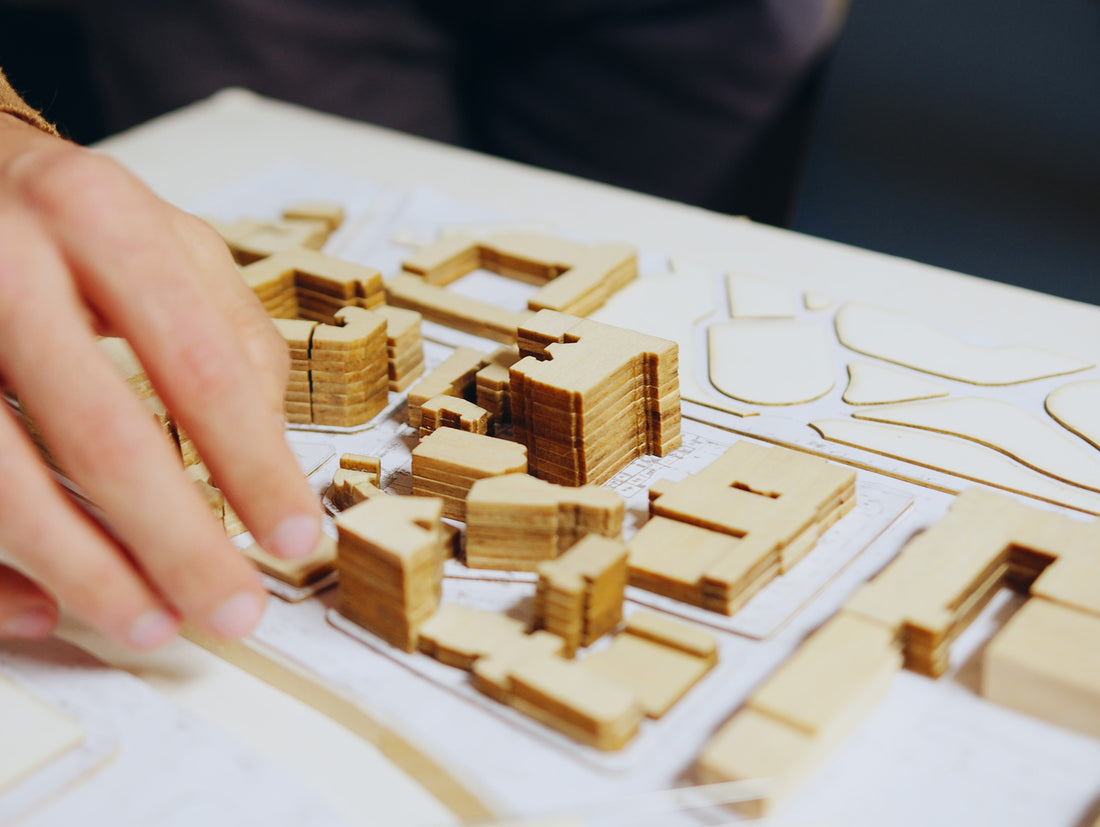
The ultimate material selection guide for laser cutting
Anyone who tries laser cutting for the first time will quickly encounter the vast variety of sheet materials. From wood to plastic, from cardboard to biobased alternatives – each material reacts differently under the laser and has its own advantages and disadvantages. Choosing the right material is often crucial for the quality of your final product. In this guide, we help you make more informed choices, so you not only save time and money but also prevent a beautiful design from coming out of the machine disappointingly.

Why material choice is so important
Laser cutting is precision work. A few tenths of a millimeter can make the difference between a tight click connection and a part that just doesn't fit. Yet, it is often thought that every material reacts "more or less the same." That is a misconception.A sheet of poplar plywood of 3 mm cuts much faster than an equally thick acrylic sheet, and a sheet of cardboard behaves completely differently from bioplastic. Additionally, appearance and workability play a significant role: do you want to create a prototype that only needs to show the shape, or a final product that can be displayed in the store? Your choice for the right material starts with that question.
Wood-like materials: MDF, plywood, and veneer
Many makers turn to wood-like materials because of their warm appearance and easy workability. MDF is the most popular choice: flat, homogeneous, and available in various colors like through-and-through white and black. It cuts cleanly and is excellent for engraving. For constructions or models, plywood is often more suitable. Poplar plywood is light and easy to cut, while birch plywood is stronger and provides cleaner edges.For those seeking a luxurious appearance, veneered panels are an option, where a layer of fine wood such as walnut or oak is bonded to MDF or plywood. This gives you the look of solid wood, but with the flatness and stability of a composite panel.

Plastics: acrylic and alternatives
For a sleek, modern look, acrylic (PMMA) is a favorite. The material is available in clear, matte, opal, fluorescent, and even mirrored variants. The cut edge becomes crystal clear, and engravings contrast beautifully, especially with cast acrylic (GS). These sheets are stress-free and therefore more reliable under the laser than extruded variants (XT), although XT is more suitable for applications requiring tight thickness tolerance. vereisen.Voor For technical applications, there are alternatives: PET-G is more impact-resistant and slightly flexible, while POM/Delrin offers low friction for moving parts.Thin Mylar film is useful for stencils and light applications, and PE/EVA foams are ideal for inlays and product protection. Each plastic requires different settings; while acrylic gives a shiny cutting edge, PET-G can melt more easily and requires faster cutting with sufficient air assist.
Paper and cardboard: fast, affordable, and versatile
Not every project needs to be made of wood or plastic. For quick prototypes, packaging, or workshops, laser cardboard is a smart choice. It cuts quickly, is inexpensive, and delivers surprisingly neat results. For models, gray board or kraftplex is often used, while corrugated cardboard is handy for large-scale models. However, be aware that not all cardboard is suitable: some types contain glues or coatings that react poorly to the laser. Therefore, always choose variants explicitly marked as "laser-ready."At Laser Cut Supply, we have selected materials that cut predictably without unwanted fumes or discoloration.

Biobased and alternative materials
Sustainability is becoming increasingly important, even in the world of digital fabrication. That's why you'll find biobased options like biopanel and kraftplex with us. These materials are made from natural fibers and plant-based binders and are fully suitable for laser cutting. They combine a modern look with a smaller ecological footprint. Especially for educational projects and design studios, it's valuable to experiment with these alternatives. They show that aesthetics and sustainability go hand in hand.
Tips to avoid disappointments
No matter how good your material is, there are always factors that can affect the result. When cutting, account for a small kerf – on average 0.1 to 0.2 mm.For click connections and precise parts, you need to take that into account in your design. Read more about kerf and tolerances. Also, don't forget that smoke and burning can be visible, especially with light woods and MDF. Use protective film to keep surfaces clean and prevent warping by storing sheets flat and dry.
-Always test your settings first on a scrap piece or sample sheet
-Use air assist to blow away smoke and heat
-Store materials in a dry, flat environment to avoid warping
Conclusion: choose wisely, create beautifully
Laser cutting offers endless possibilities, but success depends on your choice of material. For sleek end products, choose acrylic or colored MDF, for constructions plywood, for quick models cardboard, and for sustainable alternatives biobased sheets.By consciously choosing and tailoring your design to the properties of the material, you achieve the result you envision – whether it's a prototype, a model, or a luxury end product.
View all laser-ready materials
Take our material quiz to see which material suits your project!



